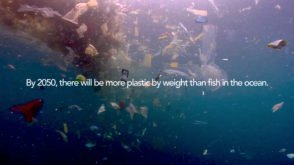Although this is a global problem, the epicenter of plastic pollution is clear. Today 60% of the plastic waste in the ocean comes from just 5 countries – China, Indonesia, the Philippines, Thailand and Vietnam. The media already talks about the Great Pacific Garbage patch. By 2025, plastic consumption in Asia will increase by 80%, surpassing 200 million tons; some are calling for specific interventions in these 5 countries. Regionally, the EU is aiming to halve plastic bag use by 2018 but this is not an international standard. Industry experts expect that by 2050 we will be producing three times as much plastic as we do today; on a volume basis, the WEF sees that by 2050 there will be more plastic than fish in the world’s oceans.
Plastic pollution is however not alone as an increasing danger to the world’s seas. One politically sensitive issue now is associated with dredging and land reclamation. Whether in the South China seas, where China is creating islands built on coral reefs, or in Indonesia, where sand mining has been providing Singapore with the resource to add 130 square kilometers of artificial ‘reclaimed’ land in the past 40 years, mining has evidently moved from land to sea.
With all the consequences of our actions now becoming apparent, the question is what will change going forward? Has ocean pollution become such a significant issue that there will be tangible change within the next decade? Some think so. Foremost, and largely because of plastic waste, the visibility of the impact is clear in the media and policy bodies. The UN has included as its 14th Sustainable Development Goal the ambition to “conserve and sustainable use the oceans, seas and marine resources.” A core 2025 objective is to prevent and significantly reduce marine pollution of all kinds, especially land-based activities, including marine debris and nutrient pollution.
Will there be more fish or plastic in the sea in 2050?



Leave a Reply
You must be logged in to post a comment.